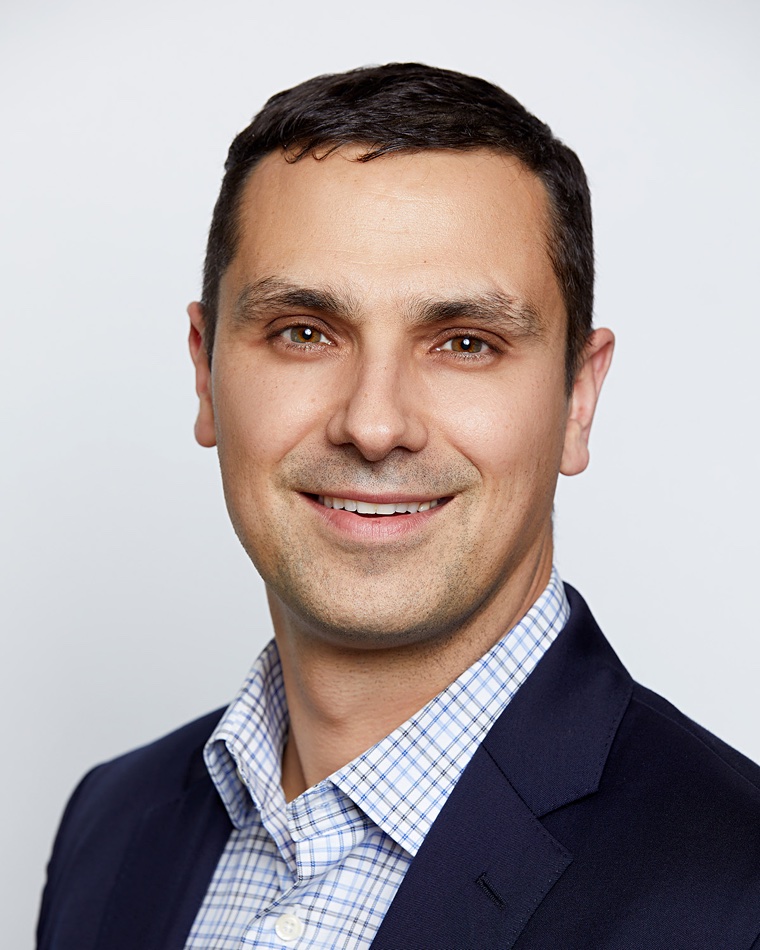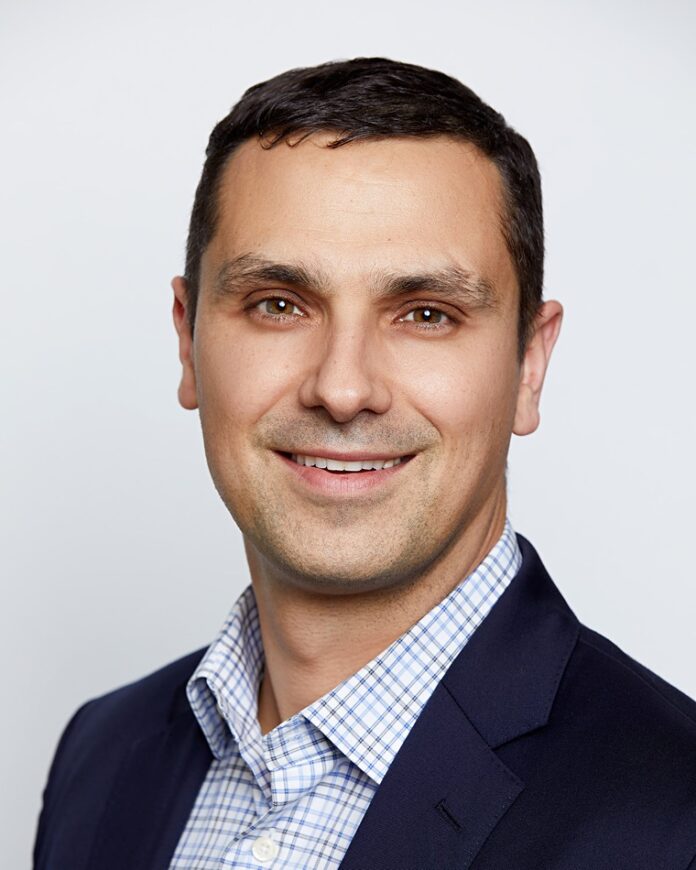HPC parallel file storage supplier Panasas has hired Ken Claffey as its new CEO, replacing Tom Shea who has returned to his COO role.
Panasas was founded in 2000 and has raised around $155 million in funding. It provides PanFS software, with NFS and SMB/CIFS support, and Supermicro-built ActiveStor scale-out hardware with a mix of all-flash, hybrid flash+disk and disk storage capacity. The recent GPT-led surge in AI interest is expanding its market.

Claffey said: “I am honored to join Panasas at this exciting juncture. The company’s unique core parallel file system technology is central to enabling the secular growth of HPC and AI. These areas are driving the increasing need for the performance, scalability, and ease of use that is uniquely inherent to the PanFS software platform.
“I am committed to capitalizing on this momentum by spearheading a strategic agenda that improves software portability and enhances performance and ecosystem integration, all of which will fuel revenue growth. I am confident that Panasas will emerge as a preeminent leader in the HPC and AI storage realm.”
Claffey joins Panasas from Seagate where he was SVP and GM of its enterprise business, which encompassed its Exos RAID array and Corvault JBOD products. He was involved with the high-performance computing (HPC) business in the past, having spent seven years at HPC storage supplier Xyratex, finishing as SVP and GM when it was acquired by Seagate at the end of 2013.
Shea was promoted to Panasas president and CEO in September 2020 after being COO for six years, and now returns to that position, providing continuity for Claffey. Brian Peterson was hired as COO in November 2020 but he left the company at the end of 2022, we’re told.
Panasas competes with DDN on hardware and software, IBM’s Storage Scale, Weka, and BeeGFS in the parallel file system area, and VAST Data in the HPC file storage system market.
HPC customers tend to be sticky and Panasas has a customer base including Airbus, Harvard Medical School, NASA, Northrop Grumman, and many universities. In the last three to five years, Weka and VAST have emerged as fast-growing HPC and file software suppliers, giving Panasas more competition than before.
On top of that, in the scale-out filer area, Dell has rejuvenated Isilon with PowerScale, Qumulo is a fast-growing business, and NetApp continues its market strength.
Q&A
With that background, we asked Claffey some questions about his appointment. His answers have been lightly edited for brevity.
Blocks and Files: Why join Panasas and return to HPC?
Ken Claffey: I think it’s a great community, great market, and being on the cutting edge of technology is really exciting. And then when I was looking for an opportunity to be CEO, I wanted to make sure that I joined a company that was a the right opportunity for me, but also that I was the right person that could make a really positive impact to where the company was at at that time.
Why this company? Look, first principles thinking; doing a parallel file system is really hard. The world of HPC, and indeed AI, needs fast storage, ergo needs a parallel file system. There’s not many companies that have done it and doing it well… We can argue there’s three to four companies that have a true parallel file system today. And Panasas is one of them.
Why wasn’t it even more successful than it’s been? It was tied to a legacy hardware architecture that really underserved and did not really fully explore the value of the underlying software technology. When you look the work the team has done over the last few years; they’ve moved off that proprietary hardware, moved to a software defined architecture, as based on standard Linux, that uses cutting edge, you know, Btrfs file system, as well as made some major enhancements, like adding erasure coding into a parallel file system.
So you put all that together, and, again, first principles, talking markets, their technology is really good. It’s robust, it works, right? This is a great opportunity for me to come in and help scale this business.
Blocks and Files: Why is Tom Shea returning to the COO role?
Ken Claffey: From my conversations with Tom, I really wanted him to continue. Yes, he’s got a lot of tribal knowledge… going back maybe 15 years. Frankly, having gone through a lot of leadership changes myself through my career, I see mistakes that happen. The new person comes in and gets rid of all the old team and all that tribal knowledge walks out the door. That was a mistake that I was very anxious not to make. And, frankly, Tom, having been in the CEO role, and having probably had good conversations with me about where I see the company going, it was like, ‘hey, I can be a partner, I want to help, and I’m very committed to this company’. And I [thought], hey, you’ve got a lot of knowledge. And I would love to learn from that knowledge and help me make sure I don’t make any… new newbie mistakes. And that’s literally the conversation that we’ve had.
Blocks & Files: Are you coming into a company where the employees have a strong sense of commitment to it?
Ken Claffey: When you walk in anywhere and take over any team, whether it’s a kid’s baseball team or soccer team, like a coach, what you look for is commitment from the players, right? Are people engaged? Are people motivated? Do people care? And that came across loud and clear. As the new CEO, if that’s not there, it’s very difficult. [But] if that’s there, then well, what a great advantage that is.
Blocks and Files: Since 2020, Qumulo has grown and grown, Dell has rejuvenated Isilon with PowerScale, and VAST Data and WekaIO have sprung upon the scene as well. How do you see Panasas going forward against that background?
Ken Claffey: The first thing I’ve got to say is, why are all these companies investing in this space? So back to first principles, it must be a really good space to be in? Yes, all these new companies are coming along, but the reality is, Panasas has been here, has been executing and building its capabilities for much longer. So that was the attraction piece. And then you know you understand or respect those competitors tremendously, but also recognize that there’s some inherent [Panasas] strengths and capabilities and classes that have been built on. And, frankly, we were held back by being tied to that legacy architecture.
Now that we too have taken [our] history of robustness, scalability, but moved to a software-defined architecture, then that creates some really interesting options for us from a technology roadmap and even business model perspective.
Blocks and Files: Will you be doing more to link with the public cloud and porting PanFS to operate on the three main public clouds?
Ken Claffey: If you look at us, we are a software company, right? It may sometimes not have felt that way to people looking on the outside. Today we deliver our software value to our customers through an appliance. This model will certainly continue to be used to do that. But you mentioned many competitors in this space. I think when you look at many of the competitors, they have an omni-channel model that includes public-private hybrid architectures. That’s certainly something that will be part of our vision.
Blocks and Files: Panasas doesn’t yet support Nvidia’s GPU direct. Is that likely to be something on your roadmap?
Ken Claffey: That is likely to be something on our roadmap. When you look at the attractiveness and the need for our parallel file system, whether it’s a traditional x86, your supercluster, your supercomputer, or you’ve got an Nvidia SuperPod, you need a parallel file system. And … we may just have the best one for that application in particular.
Blocks and Files: What’s the appeal of Panasas’s parallel file system compared to the other suppliers?
Ken Claffey: I do think if there’s one thing that we all know, from our history of supercomputing, there is a very good reason why you use parallel file systems when you get to scale them… a true parallel file system that is robust and enterprise class like PanFS… If you’re spending huge amounts of money on a super cluster, a SuperPod, you must have the fast [speed] but you want something that’s robust and reliable and easy.
You want to spend time building your inference models. You do not want to spend time administering your storage, or worrying about your storage… When you look at the actual architecture of PanFS versus other parallel file systems, you’ll see that robustness was designed in from the ground up. And that is extremely attractive to enterprise-class customers.
Why are customers so passionate about trying PanFS and buying Panasas? It’s because of that ease of use; you just set it and forget it. It just works. And it’s super, super reliable.
Blocks and Files: Suppose I say that a parallel file system software is very, very sticky. It’s like a backup application. Customers really don’t want to change it once they’re embraced it. But that means that your ability to convert other people to using your parallel file system and not storage scale, say, is very limited because they will not want to move. So to grow your market, does that mean you have to find greenfield customers? Or you have to find greenfield HPC applications? Or greenfield application locations such as edge sites? How is Panasas going to grow?
Ken Claffey: I’m not sure I agree with you. I respectfully agree and disagree. So one of the things that I’ve seen, even in my short time here, is the growing customer list. So this company has been growing for the last couple of years. That was awesome. One of the things that was attractive for me was, when you look at the customers that are converting from other parallel file systems… if it’s not working, and the customer is not happy. It’s not very sticky, right?
What we’re seeing already is customers converting from other parallel file systems… It appears to be the level, the reputation of Panasas for being easy to use, and reliable at scale, is maybe not something that’s offered by some of the other alternatives out there.
Blocks and Files: Would you want to see Panasas have close relationships with some processor, hardware and system vendors to differentiate yourself from being just another piece of software that runs on x86 servers?
Ken Claffey: I think there’s a tremendous amount of untapped opportunity across the entire ecosystem of devices. When you’re a software company, everyone thinks it’s all about software. When you’re a hardware company, it’s all about hardware. And the reality is for customers, no, irrespective of your deployment model, it’s about all the above and having worked together, no matter what level of virtualization you put in, understanding the underlying fundamental devices and their architecture and our capabilities is really important. And I think there’s a lot of opportunity there… I think we can have the balance of being software defined, but still take advantage of some of the inherent capabilities that are there at a device level.








